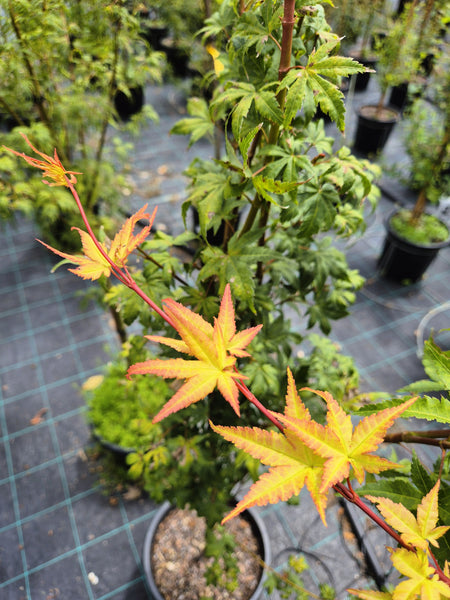Alocasia brisbanensis - Cunjevoi, Native Giant Elephant Ear
Mature size: 1.5-2m tall x 1.5-2.5m wide
Recommended spacing: 1-1.5m apart
Ideal growing conditions: Part shade, can adapt to full sun
Growth rate: Moderate
Uses: Pot/container plant, patio/verandah plant, native garden, understory planting, shaded courtyard, garden filler, mass plantings, feature plant, tropical garden
Noteworthy: Australian Native, evergreen
Tolerant: Tropical climates
Colour/Growth form: Large upright green leaves, green-cream flowers followed by red berries
Alocasia brisbanensis, also known as Cunjevoi or Native Giant Elephant Ear, is a striking evergreen native to the rainforests of eastern
Australia. Growing 1.5-2 meters tall and wide, it features large, upright green leaves and produces green-cream flowers that give way
to vibrant red berries. Ideal for part shade, this moderate-growing plant is perfect for tropical gardens, shaded courtyards, or as a
dramatic feature in mass plantings. Very similar to the Alocasia macrorrhiza/macrorrhizos 'Giant Taro'.
Frequently Asked Questions
Is Alocasia brisbanensis toxic to pets or humans?
Yes, like many other Alocasia species, it can be toxic if ingested and is a skin irritant. Keep it out of reach of children and pets.
How should I care for my Alocasia brisbanensis?
Alocasia brisbanensis thrives in bright, indirect light with occasional watering. Avoid letting the soil dry out completely but avoid
overwatering as this can lead to rot.
How fast does Alocasia brisbanensis grow?
The plant’s growth depends on conditions like light, water, and temperature, but it generally grows at a moderate pace.
Can Alocasia brisbanensis plants be grown outdoors?
Yes, it can be grown outdoors in tropical or subtropical climates. Ensure to keep it away from frost and afternoon sun.









































